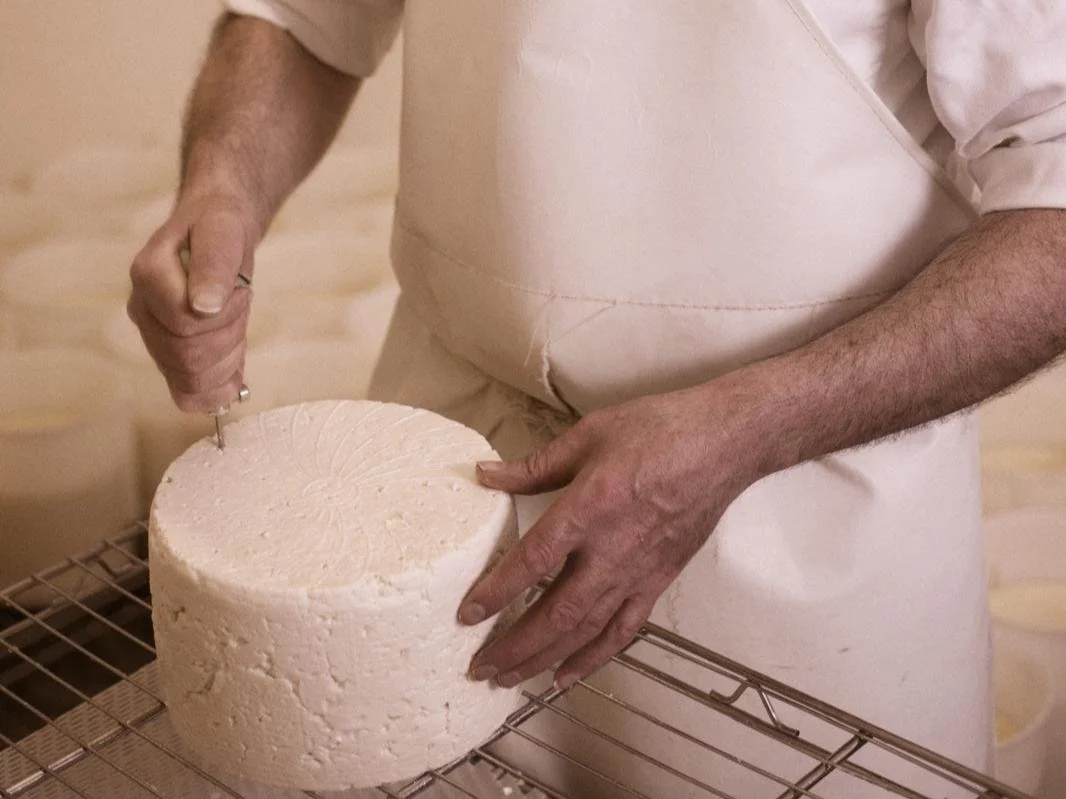
Our STORY
Humphrey Errington began making cheese at Walston Braehead Farm in the early 1980s with a small flock of ewes. His first creation, Lanark Blue, quickly grew in popularity and remains a defining part of our range today.
In 2008, Selina introduced Corra Linn, making use of the natural glut of spring milk. When Humphrey retired around 2010, the business remained a family affair, run by Andrew and Selina. In 2019, Andrew brought dairy goats to the farm, allowing us to produce cheese year-round without relying on bought-in cow’s milk.
All the milk we produce on the farm is made into cheese by hand by our small team of dedicated cheesemakers, led by Angela (Andrew’s sister). Each morning, fresh milk is pumped directly from the parlour into our traditional cheese rooms, ensuring every batch starts with the best possible raw ingredients.
Because we only use our own milk, our cheeses reflect the seasons, the land, and the natural variations in milk throughout the year—so there may be times when some varieties aren’t available.
To maintain the highest standards, we send our milk and cheese for weekly microbiological testing at an independent laboratory and have introduced daily in-house milk testing. Alongside statutory environmental health audits, we also undergo a SALSA + Cheese audit annually, following the Specialist Cheesemakers Association Code of Practice, which we have signed up for as members.
SHOP OUR CHEESE
CHEESEMAKING PROCESS

























